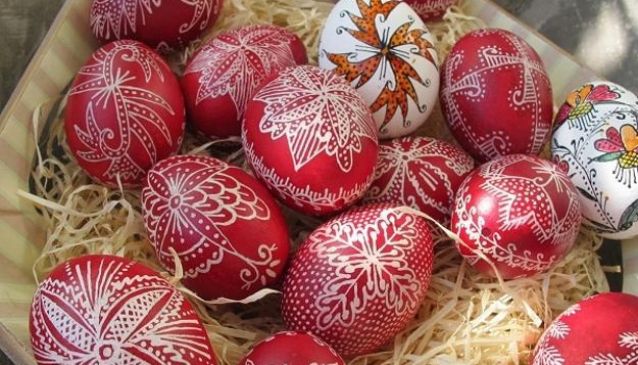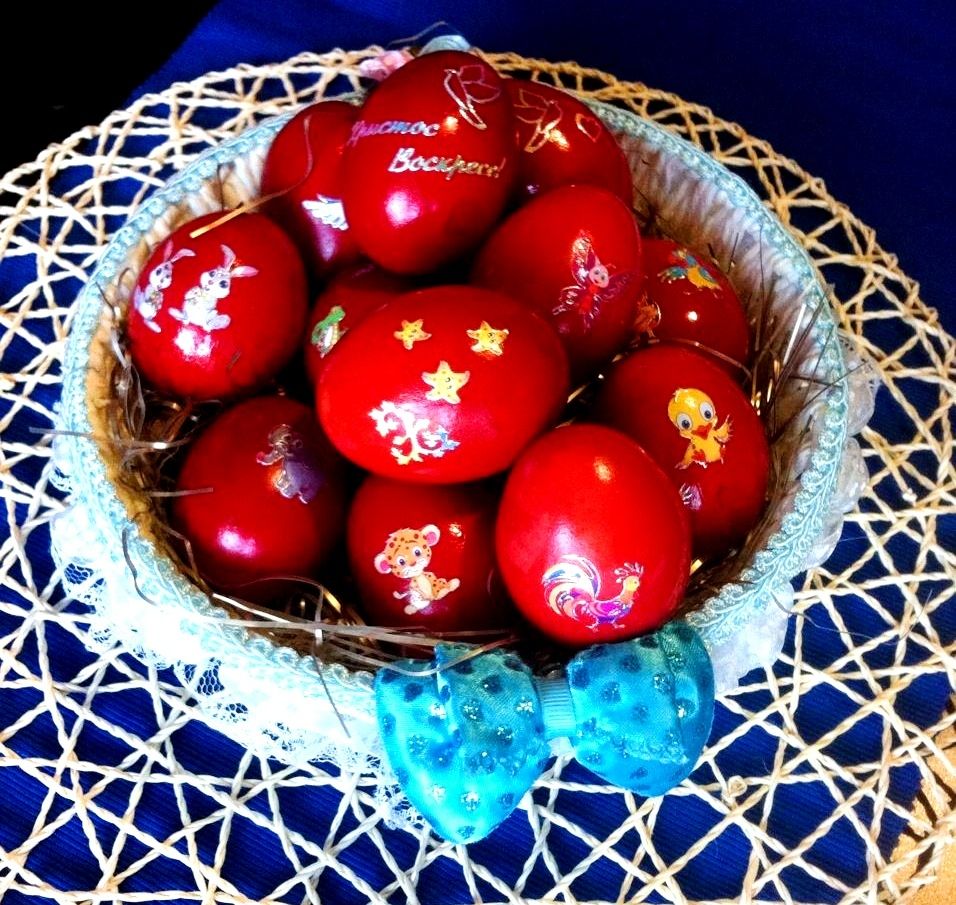Orthodox customs

Easter is one of the biggest and definitely the most joyful holiday in the Christian church.
The Christian custom of the Easter egg can be traced as far back as the early Christians of Mesopotamia, who stained eggs red in memory of the blood of Christ, shed at his crucifixion. The Christian Church officially adopted the custom, regarding the eggs as a symbol of the resurrection.
Among followers of Eastern Christianity (Montenegro as well) the legend says that Mary Magdalene was bringing cooked eggs to share with the other women at the tomb of Jesus, and the eggs in her basket miraculously turned bright red when she saw the risen Christ.
Although the tradition is to use dyed or painted chicken eggs, a modern custom is to substitute chocolate eggs, or plastic eggs filled with candy such as jelly beans. These eggs can be hidden for children to find on Easter morning, which may be left by the Easter Bunny (more in the Catholic Christian Church). They may also be put in a basket filled with real or artificial straw to resemble a bird's nest (Orthodox Church).
In the Orthodox and Eastern Catholic Churches, Easter eggs are dyed red to represent the blood of Christ, shed on the Cross, and the hard shell of the egg symbolized the sealed Tomb of Christ - the cracking of which symbolized his resurrection from the dead. Easter eggs are blessed by the priest at the end of the Paschal Vigil (which is equivalent to Holy Saturday), and distributed to the faithful.
When boiling eggs for Easter, a tan color can be achieved by boiling the eggs with onion skins. Easter eggs are often dyed red through a process of boiling them with onion skins. When boiling them with onion skins leaves can be attached prior to dying to create leaf patterns. The leaves are attached to the eggs before they are dyed with a transparent cloth to wrap the eggs with like inexpensive muslin or nylon stockings, leaving patterns once the leaves are removed after the dyeing process.
People in Montenegro are mostly orthodox and, differently then Greek Orthodox Church, we use Gregorian calendar, from where comes the difference in dates when between Catholic and Orthodox Easter in our country. Last week it was Catholic Easter, and this week a major part of Montenegro will celebrate Orthodox one.
On these days people from Montenegro have officially non-working days which includes Good Friday and Holy Sunday and Monday.
The tradition itself starts on the Good Friday, when in all homes in Montenegro, mostly women, are busy making eggs decoration. There are different kinds of styles in coloring eggs, and in the modern culture we went one step further, so we use various colors, decorations, stickers etc.
When eggs are done, the custom is not to touch it before Holy Sunday, when it is all about competition, who will win more times in the eggs duels. Friends and family hit each other's egg with their own. The one whose egg does not break is believed to be in for good luck in the future.
These days are part of the Easter fast, which lasts for 7 weeks and ends on the Holy Sunday. In these days, people who respect this religious tradition are not eating any food with the animal origin. Mostly vegetables, vegetal dairy products etc.
On the Holy Saturday, just a bit before the midnight, people gather in the church for the Divine Liturgy, which is one of the most significant ones in the Christian Church. In Montenegro the biggest gathering of Catholics is in the Saint Tryphon Cathedral in the Old town of Kotor, and for the Orthodox there are several big churches that are keeping this custom alive: St Nicholas church in Kotor, St Basil church in Nikšić, Temple of the Resurrection of Christ in Podgorica, many churches on the north of the country etc.

Modern coloring with stickers.